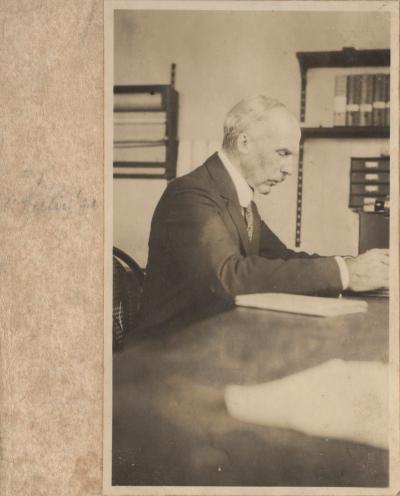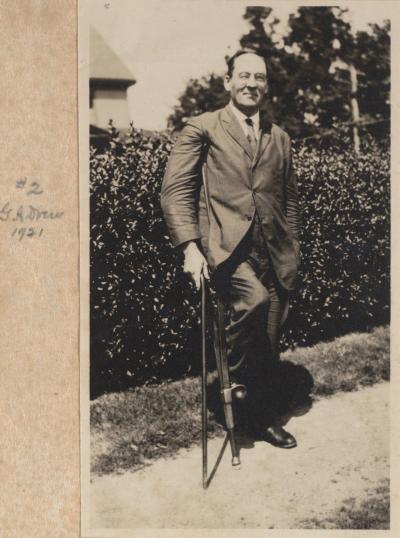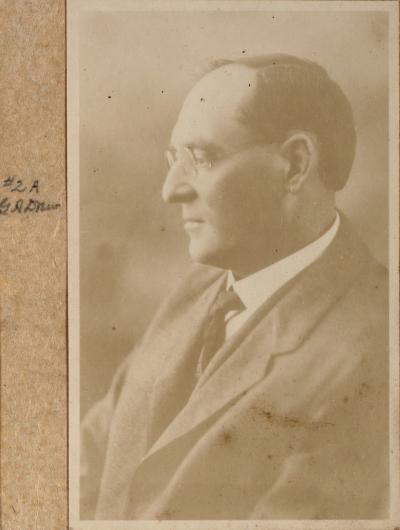Matching Items (2,114)
Filtering by
- All Subjects: People

Description
Coal bed natural gas (CBNG) production has become a significant contribution to the nation's energy supply. Large volumes of water are generated as a byproduct of CBNG extraction, of which this "product water" is relatively high in sodium. High sodicity reduces water quality and limits environmentally compliant disposal options for producers. Crop irrigation with CBNG product water complies with state and federal laws and is a disposal method that also provides a beneficial use to private landowners. However, this disposal method typically requires gypsum and sulfur soil amendments due to the high levels of sodium in the water, which can reduce soil infiltration and hydraulic conductivity. In this study, I tested a new product called Salt Extractor that was marketed to CBNG producers to ameliorate the negative effects of high sodicity. The experiment was conducted in the Powder River Basin of Wyoming. I used a random block design to compare the soil and vegetation properties of plots following application with CBNG product water and treatments of either Salt Extractor, gypsum and sulfur (conventional), or no treatment (control). Data was analyzed by comparing the amount of change between treatments after watering. Results demonstrated the known ability of gypsum and sulfur to lower the relative sodicity of the soil. Plots treated with Salt Extractor, however, did not improve relative levels of sodicity and exhibited no favorable benefits to vegetation.
ContributorsAdams, Shelly (Author) / Hall, Sharon (Thesis advisor) / Chew, Matt (Committee member) / Stromberg, Juliet (Committee member) / Arizona State University (Publisher)
Created2011

Description
Petroleum contamination is ubiquitous during extraction, transportation, refining, and storage. Contamination damages the soil’s ecosystem function, reduces its aesthetics, and poses a potential threat to human beings. The overall goals of this dissertation are to advance understanding of the mechanisms behind ozonation of petroleum-contaminated soil and to configure an effective integrated bioremediation + ozonation remedial strategy to remove the overall organic carbon. Using a soil column, I conducted batch ozonation experiments for different soils and at different moisture levels. I measured multiple parameters: e.g., total petroleum hydrocarbons (TPH) and dissolved organic carbon (DOC), to build a full understanding of the data that led to the solid conclusions. I first demonstrated the feasibility of using ozone to attack heavy petroleum hydrocarbons in soil settings. I identified the physical and chemical hurdles (e.g., moisture, mass transfer, pH) needed to be overcome to make the integration of chemical oxidation and biodegradation more efficient and defines the mechanisms behind the experimental observations. Next, I completed a total carbon balance, which revealed that multiple components, including soil organic matter (SOM) and non-TPH petroleum, competed for ozone, although TPH was relatively more reactive. Further experiments showed that poor soil mixing and high soil-moisture content hindered mass transfer of ozone to react with the TPH. Finally, I pursued the theme of optimizing the integration of ozonation and biodegradation through a multi-stage strategy. I conducted multi-stages of ozonation and bioremediation for two benchmark soils with distinctly different oils to test if and how much ozonation enhanced biodegradation and vice versa. With pH and moisture optimized for each step, pre-ozonation versus post-ozonation was assessed for TPH removal and mineralization. Multi-cycle treatment was able to achieve the TPH regulatory standard when biodegradation alone could not. Ozonation did not directly enhance the biodegradation rate of TPH; instead, ozone converted TPH into DOC that was biodegraded and mineralized. The major take-home lesson from my studies is that multi-stage ozonation + biodegradation is a useful remediation tool for petroleum contamination in soil.
ContributorsChen, Tengfei (Author) / Rittmann, Bruce E. (Thesis advisor) / Westerhoff, Paul (Committee member) / Krajmalnik-Brown, Rosa (Committee member) / Delgado, Anca G (Committee member) / Arizona State University (Publisher)
Created2018

ContributorsMarine Biological Laboratory Archives (Publisher) / Arizona Board of Regents (Publisher)
Created1925-19-39 (uncertain)


ContributorsMarine Biological Laboratory Archives (Publisher) / Arizona Board of Regents (Publisher)
Created1934




